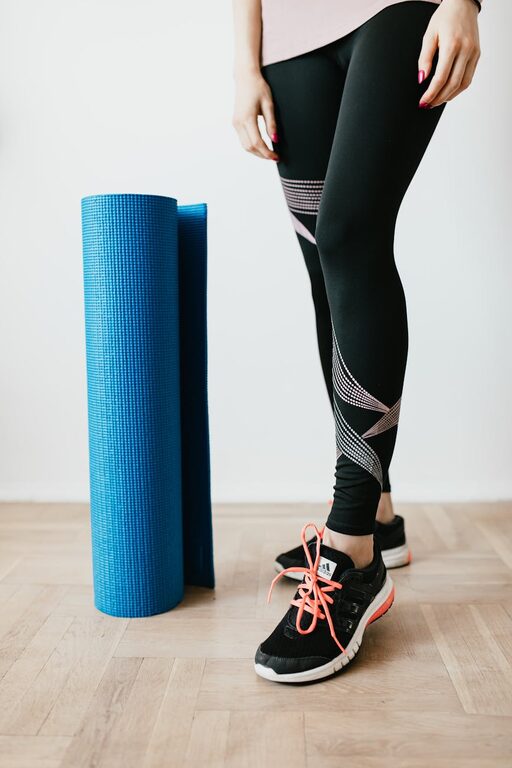
A Beginner’s Guide to Stretching at Home for Better Flexibility
Stretching is an essential part of any fitness routine, offering benefits like improved flexibility, reduced muscle tension, and enhanced circulation. For beginners, stretching at home can be a convenient and low-impact way to start moving more freely and comfortably. In this guide, we’ll explore the basics of stretching, share beginner-friendly stretches, and provide tips to help you build a safe and effective stretching routine.
Why Stretching Matters
Stretching helps maintain and improve your flexibility — the range of motion in your joints. Greater flexibility can make daily activities easier and reduce the risk of injuries, especially as you age. It also helps relieve muscle stiffness and promotes relaxation, which can be a great way to unwind after a long day.
Types of Stretching
There are two common types of stretching to know as a beginner:
1. Static Stretching
This involves holding a stretch in a comfortable position for 15 to 60 seconds to lengthen the muscles. It’s best done after your muscles are warmed up, such as after light activity or exercise.
2. Dynamic Stretching
Dynamic stretches are active movements that gently take your muscles through their full range of motion. Unlike static stretching, you don’t hold these poses; instead, you repeat controlled movements for about 10-15 reps. This type is good as a warm-up before exercise.
Getting Ready to Stretch at Home
Before you start your stretching routine:
– Choose a Quiet Space: Find a comfortable, clutter-free area where you can move freely.
– Wear Comfortable Clothes: Loose, stretchy clothing will help you move without restriction.
– Use a Mat: A yoga or exercise mat provides cushioning and prevents slipping.
– Warm Up Your Muscles: Spend 3-5 minutes walking in place, marching, or doing gentle movements to increase blood flow.
Beginner-Friendly Stretches
Here are seven simple stretches you can try at home. Remember to breathe deeply and move slowly, avoiding any bouncing or sharp pain.
1. Neck Stretch
– Sit or stand tall.
– Slowly tilt your head toward one shoulder until you feel a gentle stretch on the opposite side.
– Hold for 20-30 seconds, then switch sides.
2. Shoulder Roll
– Stand or sit with your back straight.
– Lift your shoulders up toward your ears, then roll them backward and down.
– Repeat 10 times, then reverse the direction.
3. Cat-Cow Stretch (Spine Flexibility)
– Start on hands and knees, wrists under shoulders and knees under hips.
– Inhale, arch your back, lifting your head and tailbone (Cow Pose).
– Exhale, round your back, tucking your chin and pelvis (Cat Pose).
– Repeat 8-10 times, moving smoothly between the two.
4. Seated Forward Bend
– Sit on the floor with your legs extended straight ahead.
– Hinge at your hips and reach toward your toes, keeping your back as straight as possible.
– Hold for 20-30 seconds, feeling the stretch in your hamstrings.
5. Standing Quadriceps Stretch
– Stand tall and hold on to a chair or wall for balance if needed.
– Bend one knee and bring your heel toward your buttocks, holding your ankle.
– Keep your knees close together and push your hip forward slightly.
– Hold for 20-30 seconds, then switch legs.
6. Butterfly Stretch
– Sit on the floor and bring the soles of your feet together.
– Hold your feet with your hands and gently press your knees toward the ground.
– Hold for 20-30 seconds, feeling the stretch in your inner thighs.
7. Child’s Pose
– Kneel on the floor, big toes touching, knees wide.
– Sit back on your heels and extend your arms forward on the floor.
– Rest your forehead on the mat and hold for 30-60 seconds to gently stretch your back.
Tips for Safe and Effective Stretching
– Don’t Rush: Take your time in each stretch, and listen to your body.
– Avoid Pain: Stretching should be gentle. If you feel sharp or intense pain, stop immediately.
– Breathe Smoothly: Deep breathing helps your muscles relax and can improve your stretch.
– Be Consistent: Aim to stretch at least 3-4 times a week for best results.
– Include Full Body: Stretch all major muscle groups for balanced flexibility.
Building a Stretching Routine
Start by dedicating 10-15 minutes to stretching, focusing on problem areas like the neck, shoulders, or back if you have stiffness. As you become more comfortable, you can expand your routine to include more stretches or longer hold times. Some people enjoy stretching combined with relaxation techniques such as meditation or gentle yoga.
Conclusion
Stretching at home is a simple, accessible way to boost your flexibility and overall well-being. By starting with beginner-friendly stretches and following safe practices, you’ll gradually feel more comfortable moving and less tension in your body. Remember, every small stretch counts—so why not roll out your mat today and give your body some gentle love?
Happy stretching!
